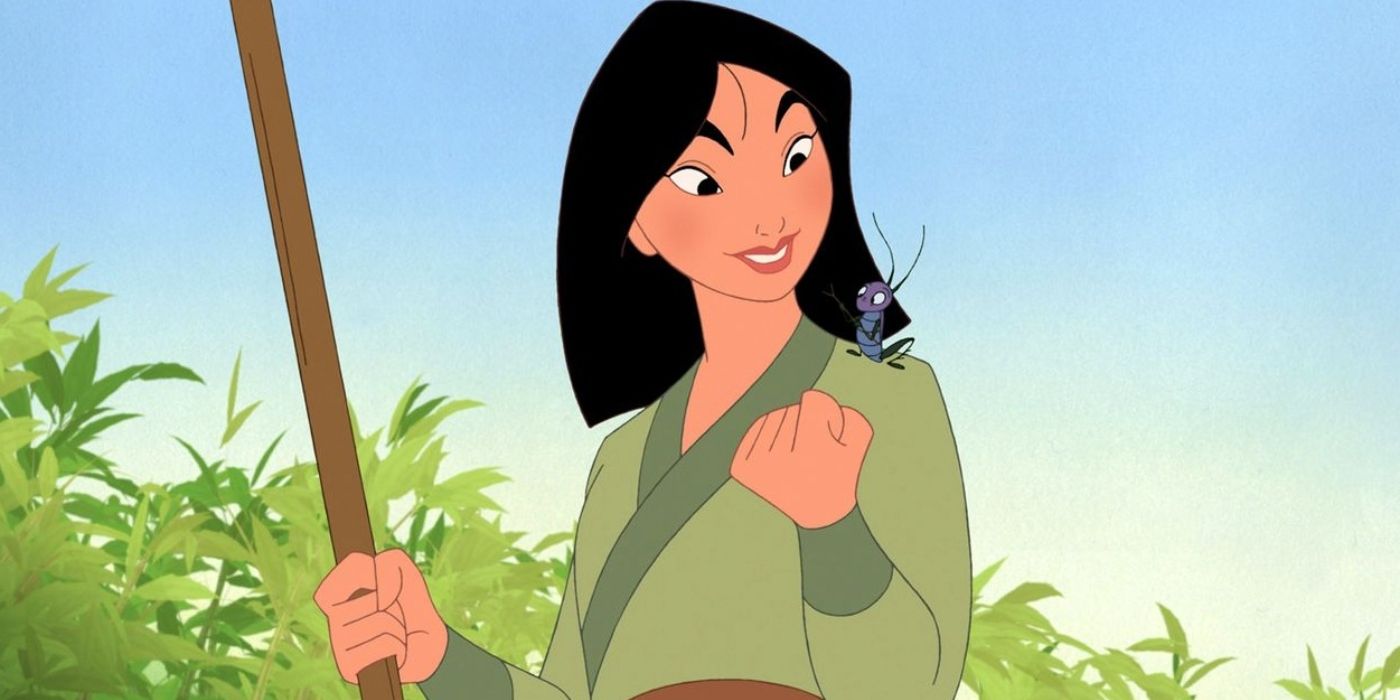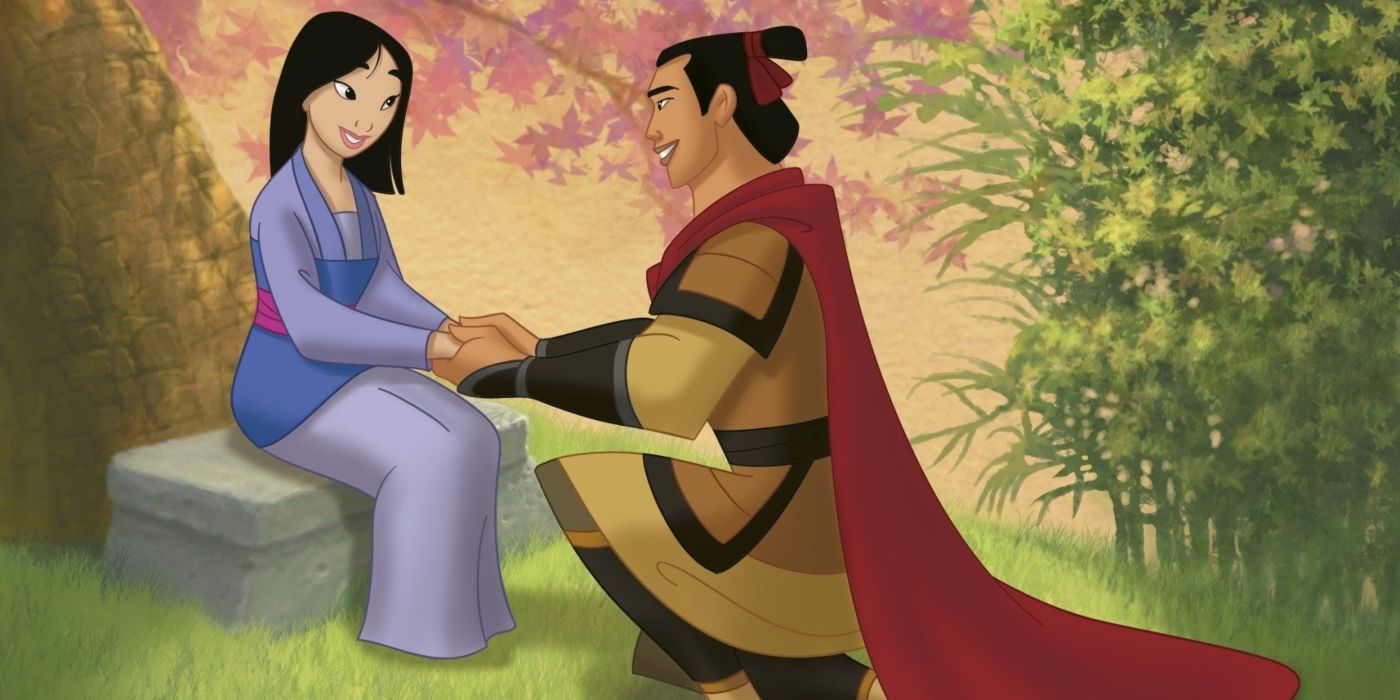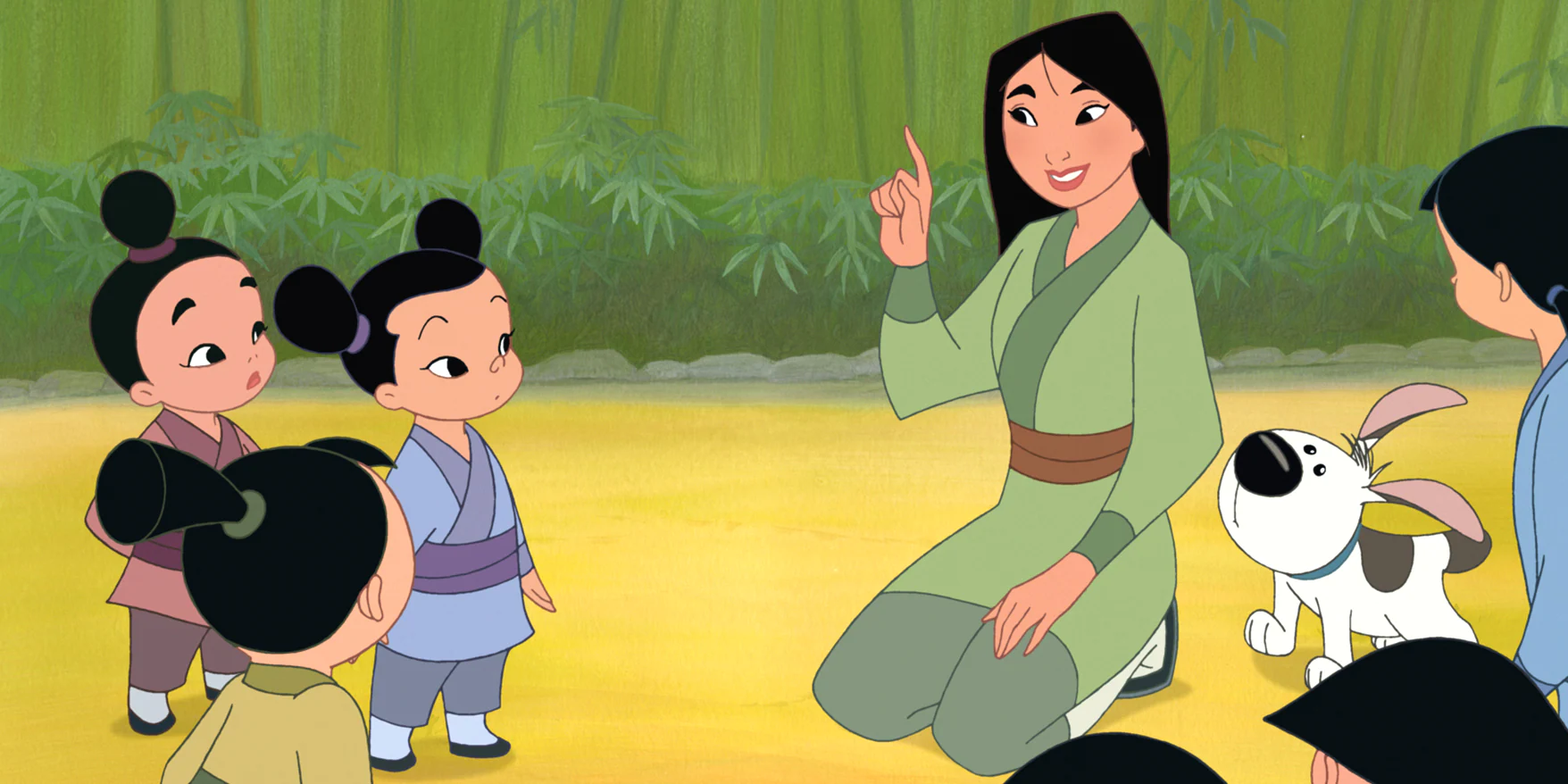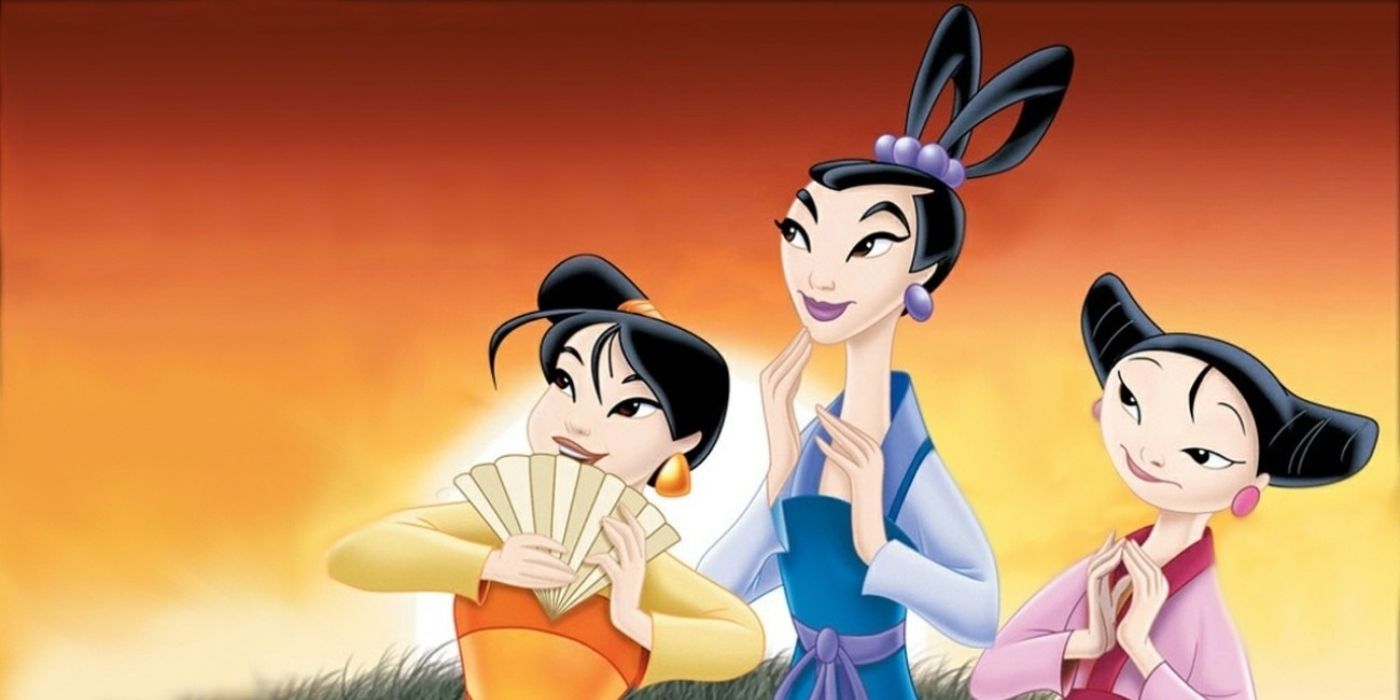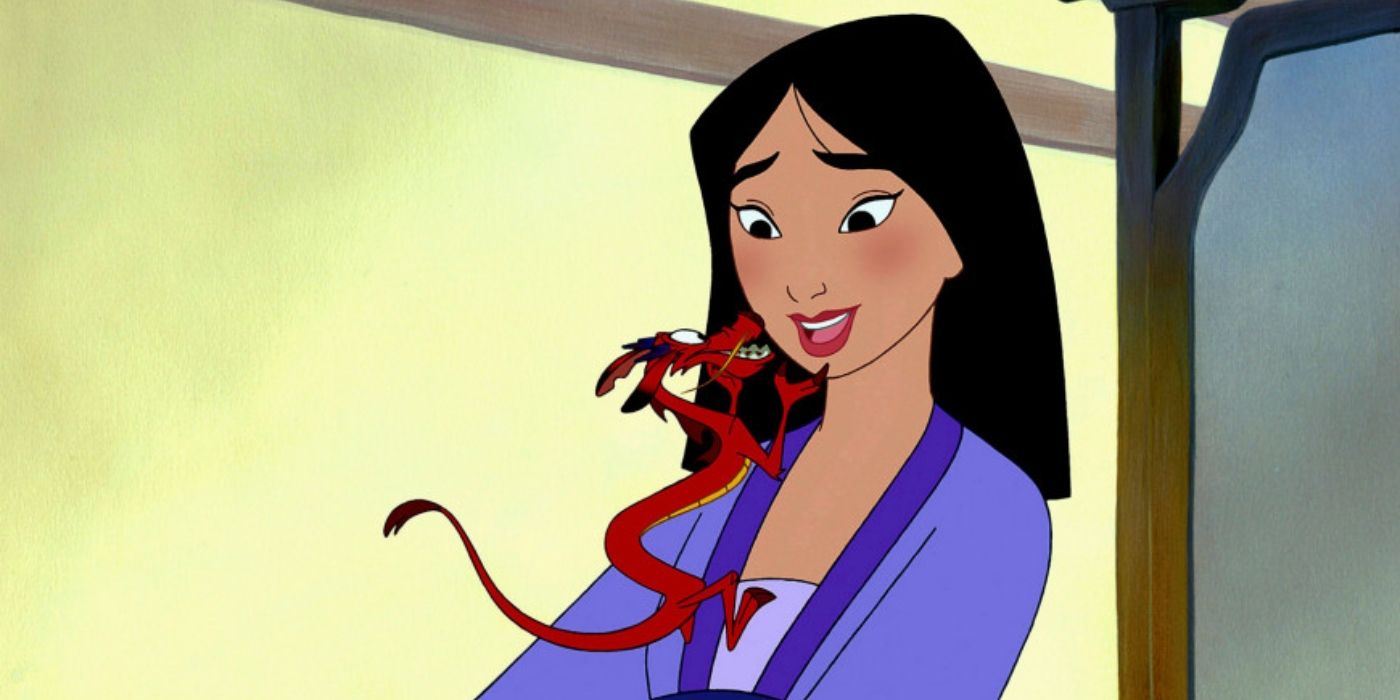Before Disney Plus allowed films to debut straight into audience's homes, the company produced a number of feature-length movies that were released specifically for home entertainment. From 1994 to 2015, Disney released a number of direct-to-video animated films, many of which were sequels to their some of their biggest franchises. And, admittedly, many of these films were criticized for not holding up in comparison to their predecessors — but that doesn't mean that there aren't fantastic gems within this category of Disney's filmography.
Mulan II is one of these gems; an underappreciated sequel that deserves more credit for its continuing story of one of the most underrated Disney princesses. Released in 2005 as a direct-to-video sequel to 1998's Mulan, Mulan II brings back much of the original voice cast to continue the story of Fa Mulan as she continues to be a hero to China and an inspiration to young girls everywhere.
'Mulan II': What Happens After Happily Ever After?
The ending of Mulan seems like it's pretty conclusive: China is saved from the Huns and Mulan is engaged to the valiant Li Shang. It's an adequate place to end the narrative, but with characters as compelling as these two, there's so much more story to tell that audiences are curious about. Though China was victorious over the Huns, it continues to need protection — which its hero is more than ready to provide. The Mongols are now the new looming danger over the horizon, so Mulan is sent to escort the Emperor's three daughters to a nearby kingdom in order to forge an alliance and strengthen their defense. Mulan, Shang, and the lovable trio of Yao, Ling, and Chien-Po must embark on this adventure to save China once again. It's a story that still carries weight and importance, even if it features less immediate danger. Ultimately, this storyline helps facilitate the themes of love, choice, and duty in new ways that were not covered in the first film.
It also doesn't shy away from one of the harder realities of Disney relationships. We all want a happily ever after for our Disney princesses and their beaus, but the realists in many people's hearts are understandably skeptical at just how stable these whirlwind romances are going to be. Mulan and Shang formed deep camaraderie with one another during their time in the army, but soldierly bonds are different from romantic partnership. Mulan II doesn't shy away from forcing Mulan and Shang to express, confront, and resolve their differences as actual partners. Sure, their issues were exacerbated by the meddling of an anxious Mushu, but they were differences between the two people that would have popped up no matter what. The two are forced to learn more about each other, affirming what makes them distinct from one another while still coming together as a team and partnership. The added experiences between the two make them a more believable couple that feels more earned and more stable than many other Disney relationships. They only add to their respect of one another, learning to appreciate and compromise their differences in order to make things work.
The Sequel Is a Natural Follow-Up to 'Mulan'
The themes this sequel engages with feel in-tune with many of the overarching ideas from the first movie. Mulan's independence and her ability to choose her destiny continue to be integral to the narrative. In the first movie, we saw Mulan grow from a misunderstood young woman into the hero of China, one epic training montage and exhilarating adventure later. Her growth doesn't stagnate in this film, as she has become an inspiration and a teacher to other young women in the film. She starts out the sequel with her own training montage of several young girls in the village, teaching them how to balance strength and vulnerability in order to be the best versions of themselves. Her deep conviction about the importance of choice and love play major roles in the character arcs and trajectories of the three princesses she escorts. Though she and Shang have been engaged to wed, she never kowtows to him, continuing to prove her independence and self-worth as an individual.
The film features a much lighter tone in comparison the first, something that made the original such a memorable experience. However, that tonal shift should be treated with levity and appreciation instead of criticism. It's a film that takes place after the war with the Huns has been won, so the tonal shift makes sense. The impending threat of the Mongols has not yet ravaged their lands the way that the Huns did, so the horrors of war aren't as immediately prevalent. The eager attempts to protect China are nonetheless in line with the spirit of the original movie. Mulan was always willing to do whatever it took to protect her homeland and family; just because it's a political escort mission instead of fighting on the front lines doesn't make it any different.
'Mulan II' Brings In Sandra Oh, Lucy Lui, and Lauren Tom
A notable feature of this sequel is that, despite being a direct-to-video release, it saw the return of many important voice actors from the original film. Ming-Na Wen and Lea Salonga return as Mulan's speaking and singing voices respectively. BD Wong is back as Li Shang, now promoted from captain to general. Even the trio of Yao (Harvey Fierstein), Ling (Gedde Watanabe), and Chien-Po (Jerry Tondo) are voiced by the same charming and endearing performers that gave their characters such life. Unfortunately, the film is notably missing Eddie Murphy's Mushu, but Mark Moseley steps up and does a phenomenal job in his stead. Even some of the smaller roles, such as The Emperor of China and the First Fa Ancestor are voiced by their same actors: legends Pat Morita and George Takei, respectively.
If the star-studded reunion didn't feature enough talent, the three princesses are also voiced by notable names that give standout performances amidst the already established crowd. Sandra Oh voices Princess Ting-Ting, Lucy Liu voices Princess Mei, and Lauren Tom voices Princess Su. This trio give endearing, lovable, and heartfelt performances that make you care about these characters just as much as the ones you're already familiar with.
The 'Mulan II' Soundtrack Is Also Underrated
What's a Disney movie without a memorable soundtrack? Even with its smaller production value, Mulan II features some catchy tunes and enjoyable musical sequences that deserve plenty of credit. "Lesson Number One" is a great combination of gentle encouragement and inspirational empowerment for young girls, featuring great rhythmic syncopation and stellar as always vocals. "Like Other Girls" speaks of a desire to be uninhibited by role and responsibilities, an idea that pairs with how the film approaches the need to fulfill one's duty. There's even a redux of fan-favorite "A Girl Worth Fighting For" that has all the absurdity and silliness of the three soldiers staying true to their characters to make the audience laugh in enjoyment.
Direct-to-video sequels to popular Disney movies often get a bad rap, but there are some truly enjoyable and lovable films that actually build upon the originals. Mulan II may take several departures from the first movie, but it also adds onto the themes and ideas of the original without treading too similar water. It grapples with love vs. duty, with the empowerment of women, and the building of strong relationships. With a still stellar voice cast, some sleeper hits in the soundtrack, and a natural continuation of the narrative that feels fun and heartwarming, Mulan II deserves massive credit for being one of the better Disney sequels ever released.

